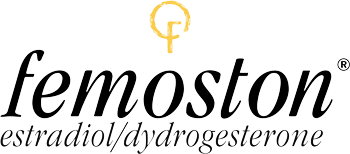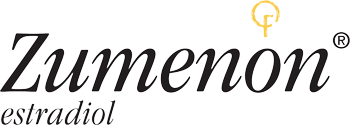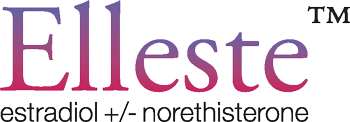
Prescribing Information
Prescribing Information
PRESCRIBING INFORMATION (combined)
Femoston®-conti 0.5 mg/2.5 mg film-coated tablets
Femoston®-conti 1 mg/5 mg film-coated tablets
Femoston® 1/10 mg film-coated tablets
Femoston® 2/10 mg film-coated tablets
(Estradiol and dydrogesterone)
Refer to the Summary of Product Characteristics for full information.
Indication: Femoston-conti 0.5 mg/2.5 mg and 1 mg/5 mg film-coated tablets; Hormone replacement therapy (HRT) for oestrogen deficiency symptoms in postmenopausal women at least 12 months since last menses. Femoston 1/10 mg and 2/10 mg film-coated tablets; Hormone replacement therapy (HRT) for oestrogen deficiency symptoms in postmenopausal women at least 6 months since last menses.
Femoston-conti 1 mg/5 mg, Femoston 1/10 mg and 2/10 mg film-coated tablets are also indicated for the prevention of osteoporosis in postmenopausal women at high risk of future fractures who are intolerant of, or contraindicated for, other medicinal products approved for the prevention of osteoporosis.
Presentation: Femoston-conti 0.5 mg/2.5 mg film-coated tablets containing 0.5 mg estradiol (as hemihydrate) and 2.5 mg dydrogesterone. Femoston-conti 1 mg/5 mg film-coated tablets containing 1 mg estradiol (as hemihydrate) and 5 mg dydrogesterone. Femoston 1/10 mg film-coated tablets containing 1 mg estradiol (as hemihydrate) or a combination of 1 mg estradiol (as hemihydrate) and 10 mg dydrogesterone. Femoston 2/10 mg film-coated tablets containing 2 mg estradiol (as hemihydrate) or a combination of 2 mg estradiol (as hemihydrate) and 10 mg dydrogesterone.
Dosage and administration: Femoston-conti 0.5 mg/2.5 mg and 1 mg/5 mg film-coated tablets; given as a continuous combined HRT every day without a break between packs. Dosage is one tablet per day for a 28 day cycle. Continuous combined treatment may be started depending on the time since menopause and severity of symptoms. Women experiencing a natural menopause should commence treatment not earlier than at least 12 months after their last natural menstrual bleed. For surgically induced menopause, treatment may start immediately. Femoston 1/10 mg and 2/10 mg film-coated tablets; given as a continuous sequential HRT without a break between packs. For first 14 days of 28-day cycle, one tablet containing estradiol taken daily; during the following 14 days one tablet containing estradiol and dydrogesterone is taken. Women who are not taking HRT and who are amenorrhoeic, or those who switch from a continuous combined HRT treatment can start on any day. If transferring from a cyclic or continuous sequential HRT regimen, treatment should begin the day following completion of prior regimen. For initiation and continuation of treatment of postmenopausal symptoms, the lowest effective dose for the shortest duration should be used. Depending on the clinical response, the dosage can subsequently be adjusted. For oral use. Can be taken before or after food. Paediatric population: No relevant indication.
Contraindications: Known, past or suspected breast cancer, known or suspected oestrogen-dependent malignant tumours, known or suspected progestogen-dependent neoplasms, undiagnosed genital bleeding, untreated endometrial hyperplasia, venous thromboembolism, known thrombophilic disorders, arterial thromboembolic disease, acute liver disease or a history of liver disease, porphyria, known hypersensitivity to the active substances or to any of the excipients.
Warning and precautions: HRT should only be initiated for symptoms that adversely affect quality of life. In all cases, a careful appraisal of the risks and benefits should be undertaken at least annually and HRT should only be continued as long as the benefit outweighs the risk. Before initiating or re-instituting HRT, a complete physical and family medical history should be taken. Physical (including pelvic and breast) examination should be guided by this and by the contraindications and warnings for use. During treatment, periodic check-ups are recommended of a frequency and nature adapted to the individual woman. Women should be advised what changes in their breasts should be reported to their doctor or nurse. Carefully supervise if leiomyoma or endometriosis, risk factors for thromboembolic disorders or oestrogen-dependent tumours, hypertension, liver disorders, diabetes mellitus, cholelithiasis, migraine or severe headaches, systemic lupus erythematosus, history of endometrial hyperplasia, epilepsy, asthma, otosclerosis and meningioma conditions are present or have previously occurred and/or have been aggravated during pregnancy or previous hormone treatment. Therapy should be discontinued in case a contraindication is discovered and in the following situations: jaundice or deterioration in liver function, significant increase in blood pressure, new onset of migraine-type headache, pregnancy. Investigate breakthrough bleeding. An increased risk of breast cancer has been reported that is dependent on the length of treatment. HRT can increase the density of mammographic images which may affect radiological detection of breast cancer. The use of oestrogen-only or combined oestrogen-progestogen HRT has been associated with a slightly increased risk of ovarian cancer. HRT is associated with an increased relative risk of venous thromboembolism (VTE) i.e. deep vein thrombosis or pulmonary embolism. Patients with known thrombophilic states have an increased risk of VTE and HRT may add to this risk. HRT is therefore contraindicated in these patients Generally recognised risk factors for VTE include: use of oestrogens, older age, major surgery, prolonged immobilisation, obesity (BMI>30 kg/m2), pregnancy/postpartum period, systemic lupus erythematosus (SLE), and cancer. If VTE develops after initiating therapy, the drug should be discontinued. Oestrogens may cause fluid retention, and therefore patients with cardiac or renal dysfunction should be carefully observed. Relative risk of coronary artery disease is raised with oestrogen-progestogen therapy, but randomised controlled trials have not shown an increase with oestrogen-only therapy. The use of oestrogen-only and oestrogen-progestogen therapy is associated with an up to 1.5-fold increased relative risk of ischaemic stroke. Women with pre-existing hypertriglyceridemia should be followed closely (risk of pancreatitis). Exogenous estrogens may induce or exacerbate symptoms of hereditary and acquired angioedema. Certain endocrine tests may be affected. No evidence for improvement in cognitive function. Patients with rare hereditary problems of galactose intolerance, total lactase deficiency or glucose-galactose malabsorption should not take this medicine. Oestrogen-progestogen combination treatment is not a contraceptive.
Interaction with other medicinal products: The metabolism of oestrogens and progestogens may be increased by concomitant use of P450 enzymes such as anticonvulsants and anti-infectives. Ritonavir, nelfinavir and herbal preparations containing St. John’s Wort may induce the metabolism of oestrogens and progestogens. caution is warranted for co-administration with the combination drug regimen ombitasvir/paritaprevir/ritonavir with or without dasabuvir and also the regimen with glecaprevir/pibrentasvir. Clinically, an increased metabolism of oestrogens and progestogens may lead to decreased effect and changes in the uterine bleeding profile. Femoston 1/10 mg and 2/10 mg film-coated tablets; Oestrogens may inhibit CYP450 drug-metabolising enzymes via competitive inhibition particularly substances such as tacrolimus and cyclosporine A, fentanyl and theophylline. This may lead to an increased plasma level of the affected substances up to toxic levels. Careful drug monitoring might be indicated and a dosage decrease of tacrolimus, fentanyl, cyclosporine A and theophylline may be necessary.
Pregnancy, Lactation and Fertility: Not recommended. If pregnancy occurs withdraw treatment immediately.
Effects on ability to drive and use machines: No influence on the ability to drive and/or to use machines.
Undesirable effects: Very Common: Headache, abdominal pain, back pain, breast pain/tenderness. Common: Vaginal candidiasis, depression, nervousness, migraine, dizziness, nausea, vomiting, flatulence, allergic skin reactions (e.g. rash, urticaria, pruritus), menstrual disorders (including postmenopausal spotting, metrorrhagia, menorrhagia, oligo-/amenorrhoea, irregular menstruation, dysmenorrhoea), pelvic pain, cervical discharge, asthenic conditions (asthenia, fatigue, malaise), peripheral oedema, increased weight. Uncommon: Cystitis-like syndrome, increase in size of leiomyoma, hypersensitivity, influence on libido, venous thromboembolism, hypertension, peripheral vascular disease, varicose vein, dyspepsia, abnormal hepatic function, occasionally with jaundice, asthenia or malaise, and abdominal pain, gall bladder disorder, breast enlargement, premenstrual syndrome, decreased weight. Rare: Haemolytic anaemia, meningioma, steepening of corneal curvature, contact lenses intolerance, myocardial infarction, stroke, angioedema, vascular purpura, erythema nodosum, chloasma or melasma, which may persist when drug is discontinued, leg cramps. Possible risk factors: Breast cancer, ovarian and endometrial cancer, venous thromboembolism, coronary artery disease and ischaemic stroke. Other adverse reactions: Oestrogen dependent neoplasms both benign and malignant, e.g. endometrial cancer, ovarian cancer, increase in size of progestogen dependent neoplasms, e.g. meningioma, haemolytic anaemia, systemic lupus erythematosus, hypertriglyceridemia, probable dementia over the age of 65,chorea, exacerbation of epilepsy, steepening of corneal curvature, contact lenses intolerance, arterial thromboembolism, pancreatitis (in women with pre-existing hypertriglyceridemia), erythema multiforme, erythema nodosum, chloasma or melasma, which may persist when drug is discontinued, leg cramps, urinary incontinence, fibrocystic breast disease, uterine cervical erosion, aggravated porphyria, total thyroid hormones increased.
Legal Category: POM Marketing Authorisation Number: Femoston 1/10 mg film-coated tablets PL 46302/0035;
Femoston 2/10 mg film-coated tablets PL 46302/0036; Femoston-conti 0.5 mg/2.5 mg film-coated tablets PL 46302/0037;
Femoston-conti 1 mg/5 mg film-coated tablets PL 46302/0038 MAH: Mylan Products Ltd., 20 Station Close, Potters Bar, Herts, EN6 1TL, UK NHS Price: Femoston-conti £24.43 (84 tablets) & Femoston £16.16 (84 tablets) Date of Revision of Prescribing Information: June 2022 Veeva Reference: FEM-2022-0062
The SmPC for this product, including adverse reactions, precautions, contra-indications, and method of use can be found at: https//www.mhra.gov.uk/Safetyinformation/Medicinesinformation/SPCandPILs/index.htm and from Viatris Medical Information, Building 4, Trident Place, Hatfield Business Park, Mosquito Way, Hatfield, Hertfordshire, AL10 9UL, phone no. 01707 853000, Email: info.uk@viatris.com.
Please continue to report suspected adverse drug reactions with any medicine or vaccine to the MHRA through the Yellow Card Scheme. It is easiest and quickest to report adverse drug reactions online via the Yellow Card website: https://yellowcard.mhra.gov.uk/ or search for MHRA Yellow Card in the Google Play or Apple App Store. Alternatively, you can report via some clinical IT systems (EMIS/SystmOne/Vision/MiDatabank) or by calling the Commission on Human Medicines (CHM) free phone line: 0800-731-6789. Adverse reactions/events should also be reported to MAH at e-mail address: pv.uk@viatris.com.
PRESCRIBING INFORMATION
Zumenon® (estradiol)
Please refer to Summary of Product Characteristics (SmPC) before prescribing.
Presentation: Zumenon® 1mg film-coated tablets containing 1 mg estradiol (as hemihydrate), Zumenon® 2mg film-coated tablets containing 2 mg estradiol (as hemihydrate).
Indication: Hormone replacement therapy (HRT) for oestrogen deficiency symptoms in postmenopausal women at least 6 months since last menses. Zumenon 2mg film-coated tablets can be used for the prevention of osteoporosis in postmenopausal women at high risk of future fractures who are intolerant of, or contraindicated for, other medicinal products approved for the prevention of osteoporosis.
Dosage and Administration: Given as a continuous oestrogen only HRT for women with or without a uterus, for oral use and every day without interruption. Dosage is one tablet per day continuously without a break between packs. For initiation and continuation of treatment of postmenopausal symptoms, use the lowest effective dose for the shortest duration. Treatment should be started with Zumenon 1mg. Depending on the clinical response, the dosage can be adjusted to individual need and can be increased by using Zumenon 2mg. In women with a uterus, a progestogen should be added to Zumenon® for 12-14 days each month to reduce the risk to the endometrium. Unless there is a previous diagnosis of endometriosis, it is not recommended to add a progestogen in hysterectomised women. In women who are not taking hormone replacement therapy and who are amenorrhoeic, are hysterectomised, or women who switch from a continuous combined hormone replacement therapy, treatment may be started on any convenient day. In women transferring from a cyclic or continuous sequential HRT regimen, treatment should begin the day following completion of the prior regimen. If the patient has regular menstruation periods, treatment is started on day one of bleeding. Can be taken with or without food.
Contraindications: Known hypersensitivity to the active substances or to any of the excipients, known, past or suspected breast cancer, known or suspected oestrogen-dependent malignant tumours (e.g. endometrial cancer), undiagnosed genital bleeding, untreated endometrial hyperplasia, previous or current venous thromboembolism (deep vein thrombosis, pulmonary embolism), known thrombophilic disorders (e.g. protein C, protein S, or antithrombin deficiency), active or recent arterial thromboembolic disease (e.g. angina, myocardial infarction), acute liver disease or a history of liver disease, porphyria.
Warnings and precautions: HRT should only be initiated for symptoms that adversely affect quality of life. In all cases, a careful appraisal of the risks and benefits should be undertaken at least annually HRT should only be continued as long as the benefit outweighs the risk. Before initiating or re-instituting HRT, a complete physical and family medical history should be taken. An increased risk of breast cancer has been reported that is dependent on the length of treatment.
Risk of endometrial hyperplasia and carcinoma are increased when oestrogens are administered alone for prolonged periods. The risk is reduced with the addition of a progestogen for at least 12 days per cycle in non-hysterectomised women. Carefully supervise if leiomyoma (uterine fibroids) or endometriosis, risk factors for thromboembolic disorders, oestrogen-dependent tumours (e.g. 1st degree heredity for breast cancer), hypertension, liver disorders, diabetes mellitus, cholelithiasis, migraine or (severe) headache, systemic lupus erythematosus, history of endometrial hyperplasia, epilepsy, asthma, or otosclerosis are present. Therapy should be discontinued in case a contraindication is discovered; jaundice or deterioration in liver function, significant increase in blood pressure, new onset of migraine-type headache, pregnancy. Exogenous estrogens may induce or exacerbate symptoms of hereditary and acquired angioedema. Patients with rare hereditary problems of galactose intolerance, total lactase deficiency or glucose-galactose malabsorption should not take this medicine. If at risk of pregnancy non-hormonal contraceptive methods should be adhered to.
Interactions with other medicinal products: The metabolism of oestrogens may be increased by concomitant use of P450 enzymes such as anticonvulsants (e.g. phenobarbital, phenytoin, carbamazepine) and anti-infectives (e.g. rifampicin, rifabutin, nevirapine, efavirenz). Ritonavir, nelfinavir and herbal preparations containing St. John’s Wort may induce the metabolism of oestrogens and progestogens. Clinically, an increased metabolism of oestrogens and progestogens may lead to decreased effect and changes in the uterine bleeding profile. Oestrogens may inhibit CYP450 drug-metabolising enzymes via competitive inhibition such as tacrolimus and cyclosporine A, fentanyl and theophylline. This may lead to a plasma increase of the affected substances up to toxic levels. Careful drug monitoring might be indicated and a dosage decrease of tacrolimus, fentanyl, cyclosporin A, and theophylline may be necessary. Caution is warranted for co-administration with the combination drug regimen ombitasvir/paritaprevir/ritonavir with or without dasabuvir and also the regimen glecaprevir/pibrentasvir. Please refer SmPC for further information.
Pregnancy and Lactation: Not recommended. If pregnancy occurs withdraw treatment immediately.
Effects on ability to drive and operate machinery: Does not affect the ability to drive or use machines.
Undesirable effects: Common: Increase and decrease in weight, headache, nausea, abdominal pain, rash, pruritus, leg cramps, metorrhagia, uterine/vaginal bleeding including spotting, pelvic pain, asthenia. Uncommon: Vaginal candidiasis, hypersensitivity, nervousness, depressed mood, dizziness, visual disturbances, palpitations, venous thromboembolism, hypertension, peripheral vascular disease, varicose vein, dyspepsia, gall bladder disorder, urticaria, erythema nodosum, back pain, change in cervical secretion, menorrhagia, breast pain/tenderness, peripheral oedema, oedema. Rare: Anxiety, increase and decrease in libido, migraine, contact lenses intolerance, bloating, vomiting, hirsutism, acne, muscle cramps, breast enlargement, premenstrual-like symptoms, vaginal discharge, dysmenorrhoea, fatigue. Very rare: Haemolytic anaemia.
Possible risk factors: Breast cancer, ovarian cancer, endometrial cancer, venous thromboembolism, coronary artery disease, ischaemic stroke. Other adverse reactions (frequency unknown): Breast cancer, oestrogen dependent neoplasms benign and malignant, e.g. endometrial cancer, ovarian cancer, increase in size of leiomyoma, probable dementia over the age of 65, chorea, exacerbation of epilepsy, stroke, arterial thromboembolism, i.e. angina and myocardial infarction, venous thromboembolism, i.e. deep leg or pelvic venous thrombosis and pulmonary embolism, pancreatitis (in women with pre-existing hypertriglyceridaemia), gastroesophageal reflux disease, hepatic function abnormal, sometimes with jaundices, angioedema, chloasma, erythema multiforme, vascular purpura, urinary incontinence, fibrocystic breast disease.
Legal Category: POM
Name and Address of Marketing Authorisation Holder: Mylan Products Ltd., 20 Station Close, Potters Bar, Herts, EN6 1TL, UK.
PL No: Zumenon® 1mg Film-coated Tablets PL 46302/0052
Zumenon® 2mg Film-coated Tablets PL 46302/0053
Basic NHS price: £6.89 (84 tablets)
Date of Last Revision: June 2022.
Veeva Reference: ZUM-2022-0001
The SmPC for this product, including adverse reactions, precautions, contra-indications and method of use can be found at: https://www.mhra.gov.uk/Safetyinformation/Medicinesinformation/SPCandPILs/index.htm and from Mylan Medical Information, Building 4, Trident Place, Hatfield Business Park, Mosquito Way, Hatfield, Hertfordshire, AL10 9UL, phone no. 01707 853000, Email: info.uk@viatris.com
Please continue to report suspected adverse drug reactions with any medicine or vaccine to the MHRA through the Yellow Card Scheme. It is easiest and quickest to report adverse drug reactions online via the Yellow Card website: https://yellowcard.mhra.gov.uk/ or search for MHRA Yellow Card in the Google Play or Apple App Store. Alternatively, you can report via some clinical IT systems (EMIS/SystemOne/Vision/MiDatabank) or by calling the Commission on Human Medicines (CHM) free phone line: 0800-731-6789. Adverse reactions/events should also be reported to MAH at e-mail address: pv.uk@viatris.com.
PRESCRIBING INFORMATION
ELLESTETM (estradiol +/- norethisterone acetate)
Please refer to Summary of Product Characteristics (SmPC) before prescribing.
Presentation: Elleste SoloTM 1 mg and 2 mg film-coated tablets containing estradiol hemihydrate 1 mg and 2 mg respectively. Elleste DuetTM 1 mg film-coated tablets containing estradiol hemihydrate 1 mg (white tablets) and estradiol hemihydrate 1 mg and norethisterone acetate 1 mg (pale green tablets). Elleste DuetTM 2 mg film-coated tablets containing estradiol hemihydrate 2 mg (orange tablets) and estradiol hemihydrate 2 mg and norethisterone acetate 1 mg (grey tablets). Elleste DuetTM Conti film-coated tablets (grey tablets) containing 2 mg estradiol hemihydrate and 1 mg norethisterone acetate.
Indication: Hormone replacement therapy for oestrogen deficiency symptoms in peri- and post-menopausal women (Elleste SoloTM; Elleste DuetTM) and in post-menopausal women with an intact uterus who are at least one-year post menopause (Elleste DuetTM Conti). Prevention of osteoporosis in post-menopausal women at high risk of future fractures who are intolerant of, or contraindicated for, other medicinal products approved for the prevention of osteoporosis (Elleste DuetTM Conti; Elleste DuetTM 2 mg; Elleste SoloTM 2 mg).
Dosage and administration: Elleste SoloTM 1 mg and 2 mg film-coated tablets: One tablet daily to be taken orally and continuously in hysterectomised women; in women with an intact uterus, progestogen should be added for 12-14 days each cycle. Elleste Duet 1 mg film-coated tablets: One white tablet to be taken daily for 16 days followed by one pale green tablet to be taken daily for the next 12 days, then begin a new cycle without a break. For oral use. Elleste DuetTM 2 mg film-coated tablets: One orange tablet to be taken daily for 16 days followed by one grey tablet to be taken daily for the next 12 days, then begin a new cycle without a break. For oral use. Elleste DuetTM Conti: One grey tablet to be taken daily. For oral use. Please refer SmPC for full details on initiating therapy and switching from other forms of HRT.
Contraindications: Known, past or suspected breast cancer. Known or suspected oestrogen-dependent malignant tumours. Undiagnosed genital bleeding. Untreated endometrial hyperplasia. Previous idiopathic or current venous thromboembolism. Known thrombophilic disorders. Active or recent arterial thromboembolic disease. Acute liver disease or history of liver disease as long as LFTs are abnormal. Hypersensitivity to the active substances or excipients. Porphyria.
Warning and precautions: HRT should only be initiated for symptoms that adversely affect quality of life. In all cases, a careful appraisal of the risks and benefits should be undertaken at least annually. HRT should only be continued as long as the benefit outweighs the risk. Before initiating or reinstituting HRT, take a complete personal and family medical history and perform appropriate physical examinations. Advise women about what breast changes should be reported. Closely supervise women with the following conditions or a history of them: leiomyoma or endometriosis; history of, or risk factors for, thromboembolic disease; risk factors for oestrogen dependent tumours; hypertension; liver disorders; diabetes mellitus; cholelithiasis; migraine or severe headache; systemic lupus erythematosus; endometrial hyperplasia; epilepsy; asthma; otosclerosis. Discontinue therapy if a contraindication is discovered and in the following conditions: jaundice or deteriorating liver function; significant increase in blood pressure; new onset migraine-type headache; pregnancy; venous thromboembolism (patients should contact their doctor immediately if they develop painful swelling of a leg, sudden pain in the chest, shortness of breath). Risk of endometrial hyperplasia and carcinoma are increased when oestrogens are administered alone for prolonged periods. The risk is reduced with the addition of a progestogen for at least 12 days per cycle in non-hysterectomised women. Investigate breakthrough bleeding. An increased risk of breast cancer has been reported that is dependent on the length of treatment. HRT can increase the density of mammographic images which may affect radiological detection of breast cancer. HRT is associated with an increased relative risk of venous thromboembolism (VTE) or pulmonary embolism (PE). Risk factors include personal or family history of thrombosis, severe obesity, systemic lupus erythematosus, immobilisation, major trauma and major surgery. Consider discontinuing HRT 4-6 weeks before elective surgery requiring immobilisation. Therapy should be discontinued if VTE develops after initiating surgery. There is an increased risk of cardiovascular morbidity during the first year of use of HRT. HRT is associated with an up to 1.5-fold increased risk of stroke. Long term use of oestrogens in women has been associated with an increased risk of ovarian cancer. Oestrogens may cause fluid retention. Women with pre-existing hypertriglyceridemia should be followed closely (risk of pancreatitis). Exogenous estrogens may induce or exacerbate symptoms of hereditary and acquired angioedema. Certain endocrine tests may be affected. No evidence for improvement in cognitive function. Increased risk of gallbladder disease. Liver tumours leading to intra-abdominal haemorrhage have been reported. Patients with rare hereditary disorders of galactose intolerance, the Lapp lactase deficiency or glucose-galactose malabsorption should not take this medicine. Elleste™ Duet 2 mg film-coated tablets and Elleste™ Solo 2 mg film-coated tablets contain sunset yellow colouring (E110) which can cause allergic reactions. May interact with other medicines. Please refer SmPC for further information.
Interaction with other medicinal products: The metabolism of oestrogens and progestogens may be increased by concomitant use of substances known to induce drug-metabolising enzymes, specifically cytochrome P450, such as anticonvulsants (e.g. phenobarbital, phenytoin, carbamazepine) and anti-infectives (e.g. rifampicin, rifabutin, nevirapine, efavirenz). Ritonavir, telaprevir, nelfinavir and herbal preparations containing St John’s Wort may induce the metabolism of oestrogens and progestogens. Caution is warranted for co-administration with the combination drug regimen ombitasvir/paritaprevir/ritonavir with or without dasabuvir and also the regimen glecaprevir/pibrentasvir. Please refer SmPC for further information.
Pregnancy and lactation: Not recommended. If pregnancy occurs, withdraw treatment immediately.
Effects on ability to drive and use machines: No influence on the ability to drive and/or to use machines.
Undesirable effects: Very common side effects (>1/10): Headache, breast pain and tenderness, dysmenorrhoea, menstrual disorder. Common side effects (>1/100): Rash, itching; uterine/vaginal bleeding; breast tenderness and enlargement; increase in size of uterine fibroids; nausea; abdominal pain; headache; weight increase / decrease; oedema; change in mood including anxiety and depressive mood; change in libido. Other side effects include: Vaginal candidiasis; vomiting; gallbladder disease; pancreatitis, gallstones; dizziness; migraine; increased blood pressure; leg cramps; alopecia; hirsutism; venous thromboembolism; thrombophlebitis; thrombosis; endometrial neoplasia; dysmenorrhoea; aggravation of endometriosis; changes in cervical eversion, production of mucus and erosion; cystitis-like syndrome; endometrial cancer; breast cancer; bloating; myocardial infarction; stroke; liver tumours; cholestatic jaundice; chloasma; erythema multiforme; erythema nodosum; muscle cramps; vascular purpura; visual disturbances; intolerance to contact lenses; sodium and water retention; reduced glucose tolerance; and probable dementia. Please refer SmPC for further information.
Legal Category: POM
Marketing Authorisation Numbers and Basic NHS Price: Elleste SoloTM 1mg: PL 46302/0169; 3 x 28 film-coated tablets £5.06. Elleste SoloTM 2mg: PL 46302/0170; 3 x 28 film-coated tablets £5.06. Elleste DuetTM 1mg: PL 46302/0164; 3 x 28 film-coated tablets £9.20. Elleste DuetTM 2mg: PL 46302/0165; 3 x 28 film-coated tablets £9.20. Elleste DuetTM Conti: PL 46302/0166; 3 x 28 film-coated tablets £17.02.
MAH: Mylan Products Ltd. Further information is available on request from: Mylan Products Ltd., Station Close, Potters Bar, Herts, EN6 1LT. Tel. 01707 853000
Date of Last Revision: June 2022
Veeva Reference: ELL-2022-0021
The SmPC for this product, including adverse reactions, precautions, contra-indications, and method of use can be found at: https://www.mhra.gov.uk/Safetyinformation/Medicinesinformation/SPCandPILs/index.htm and from Mylan Medical Information, Building 4, Trident Place, Hatfield Business Park, Mosquito Way, Hatfield, Hertfordshire, AL10 9UL, phone no. 01707 853000, Email: info.uk@viatris.com
Please continue to report suspected adverse drug reactions with any medicine or vaccine to the MHRA through the Yellow Card Scheme. It is easiest and quickest to report adverse drug reactions online via the Yellow Card website: https://yellowcard.mhra.gov.uk/ or search for MHRA Yellow Card in the Google Play or Apple App Store. Alternatively, you can report via some clinical IT systems (EMIS/SystemOne/Vision/MiDatabank) or by calling the Commission on Human Medicines (CHM) free phone line: 0800-731-6789. Adverse reactions/events should also be reported to MAH at e-mail address: pv.uk@viatris.com
HCP Disclaimer
This website is intended for UK healthcare professionals only.
Viatris Connect is an online platform for UK healthcare professionals.
Across the website you will find news, blogs and product information.
FREE Menopause and HRT webinars available to watch by registering to Viatris Connect today
Please note that the website contains promotional and non-promotional material including educational content and resources to help you and your patients.
REGISTER NOW






